Do tortillas go bad? Of course. Like many other kinds of foods, tortillas do go bad through time.
Tortillas regardless of their types, are a versatile food, and now they are becoming more popular in the world. While manufacturers are trying to maintain the good quality of their products for a long time, the consumers are also trying to keep them as long as possible in the house.
Most of the time, the consumers do not usually consume the whole pack of tortilla chips on the day they are baked or on an opening day. They’re going to keep the leftovers for the upcoming use.
However, tortillas, like some other foods, will go wrong. To make sure that you won’t eat a lousy tortilla, you should read my article below for more information and know how long your tortillas last and how to keep them.
So, let’s start!
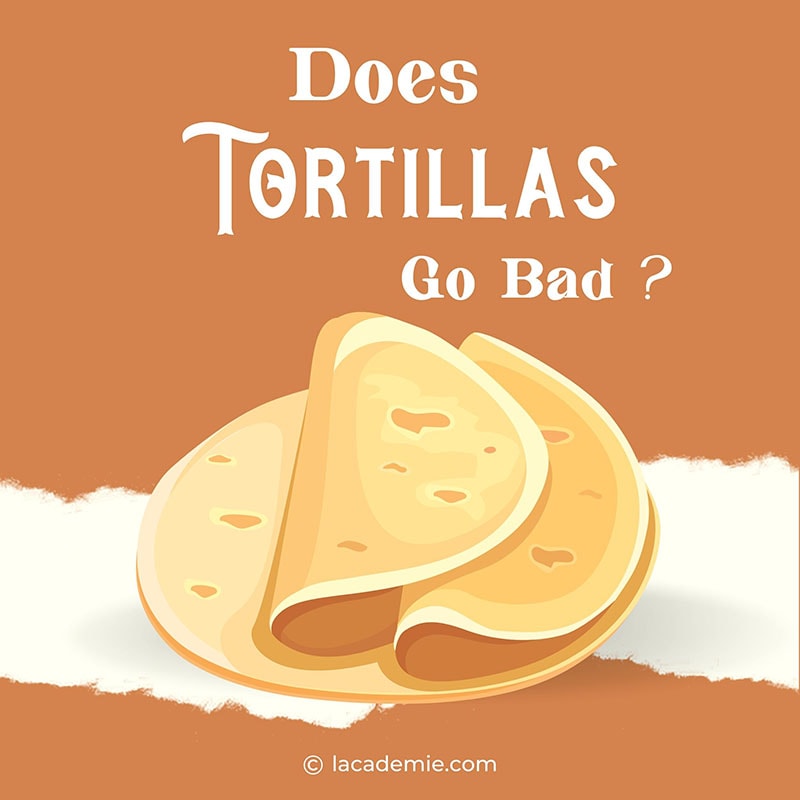
Why Do Your Tortillas Go Bad?
Regularly, tortillas will last for a few days in a room with normal condition and up to several months when kept in cold condition. However, tortillas do go wrong due to some of the reasons below.
What Is A Tortilla?
Tortilla is a traditional staple food of Mexican before it “immigrants” to the U.S. and became a popular flatbread here.
A tortilla is made from four (corn or wheat flour in use will lead to different tortillas), water, and salt. In comparison, the corn tortillas need to go through the process of maize nixtamalization. While tortillas made from flour or wheat flour do not.
This round, thin, flatbread is a good source of protein, calcium, energy and other nutrients. The nixtamalized process in corn tortillas will help to increase the level of calcium and the bioavailability of niacin.
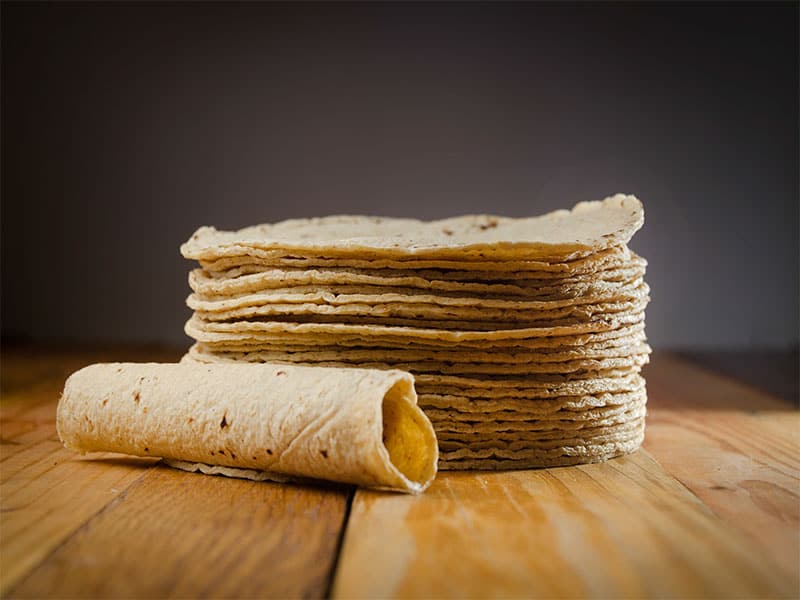
How Many Types Of Tortillas?
The varieties of tortillas depend on the ingredients you used to make them. Here are some types of tortillas that you get familiar with.
Corn Tortillas:
This type of tortillas is made by nixtamalized maize, which is cured maize in limewater to peel off the maize kernel. After that, the mixture is ground, cooked, and kneaded into a masa. Then it is baked on a hot griddle to produce table tortillas, taco shells or dried into the nixtamalized corn flour. Corn tortillas may vary in their color due to the type of corn used for the ingredient.
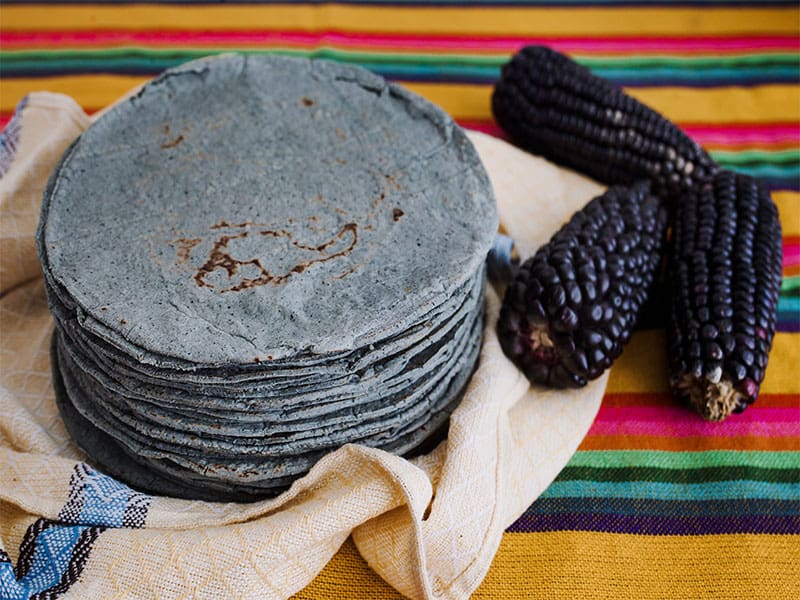
Wheat Or Flour Tortillas:
This type of tortilla is made from finely ground wheat flour. The wheat tortilla is a simple version of corn tortilla when it includes water, flour, salt, and fat. Furthermore, commercial tortillas also use baking powder as a leavening agent and some other ingredients.
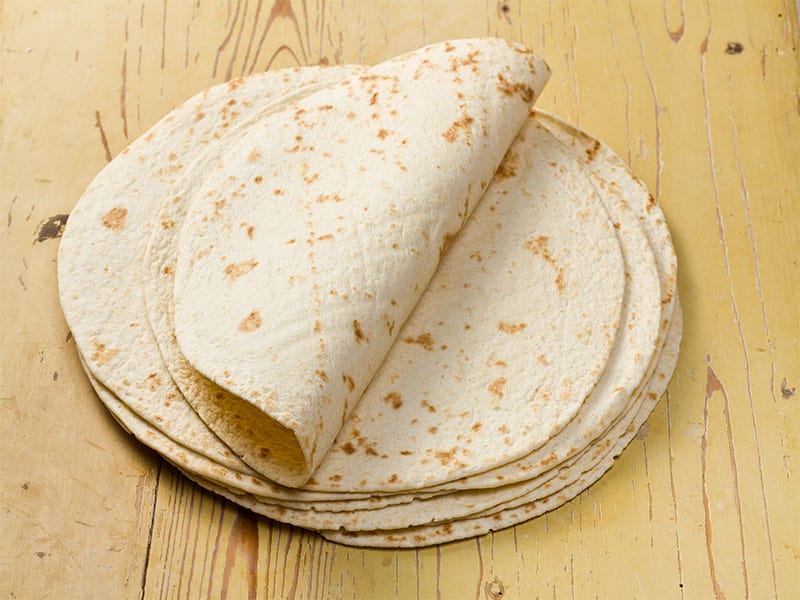
Spinach Tortillas:
The eye-catchy color of spinach tortillas is not surprising because they came from spinach. By adding spinach into tortillas, the fiber level will enhance with the green color, differentiating from usual tortillas.
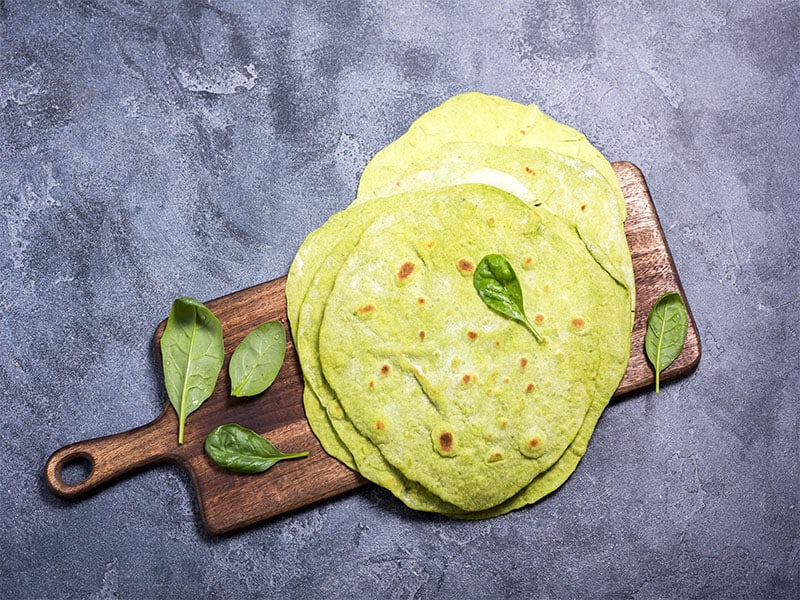
Home-Made Tortillas:
While it sounds surprising, you can easily make tortillas at home with just an excellent tortilla maker for your family and friends. You will need a homemade recipe to make this flatbread quickly and accessible with all-purpose flour, water, and salt.
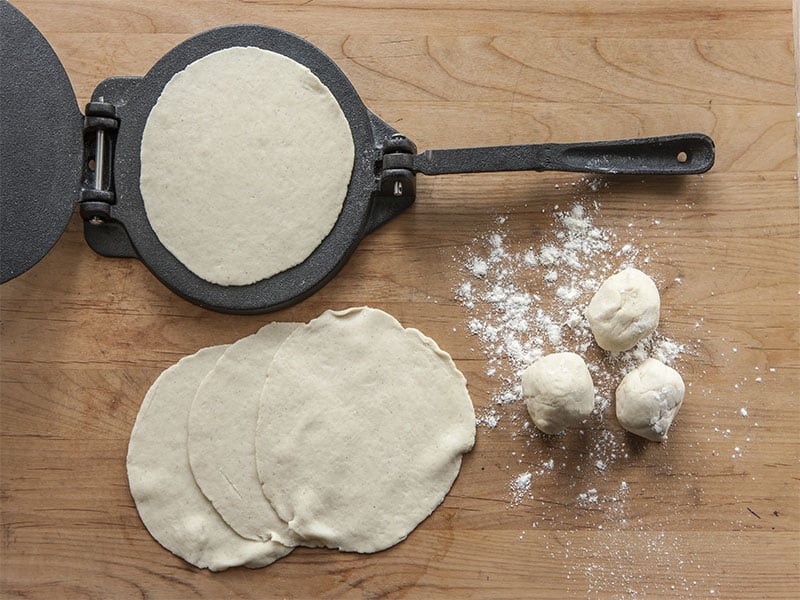
Do Tortillas Go Bad?
Like any other kinds of food, tortillas also go bad due to some of these reasons:
Mold:
When you store a tortilla in a condition that motivates the mold to expand, it will start to develop on your tortilla and affect your food’s quality. Normal eyes can notice some green or bluish mold, but some are not. Some types of mold will have the same color as your tortillas.
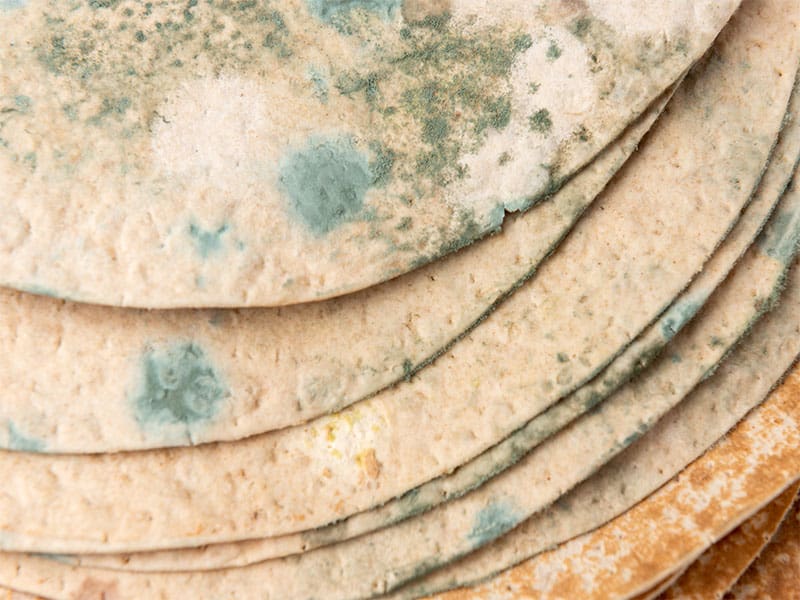
Humid:
Tortillas after baking or frying often have an average moisture level to keep them soft and elastic enough to use with other toppings and fillings. However, the high moisture in the storage place will disturb the qualities of tortillas by making them too moist. When the tortillas get moist, it is a favorable condition for mold and unpleasant smell.
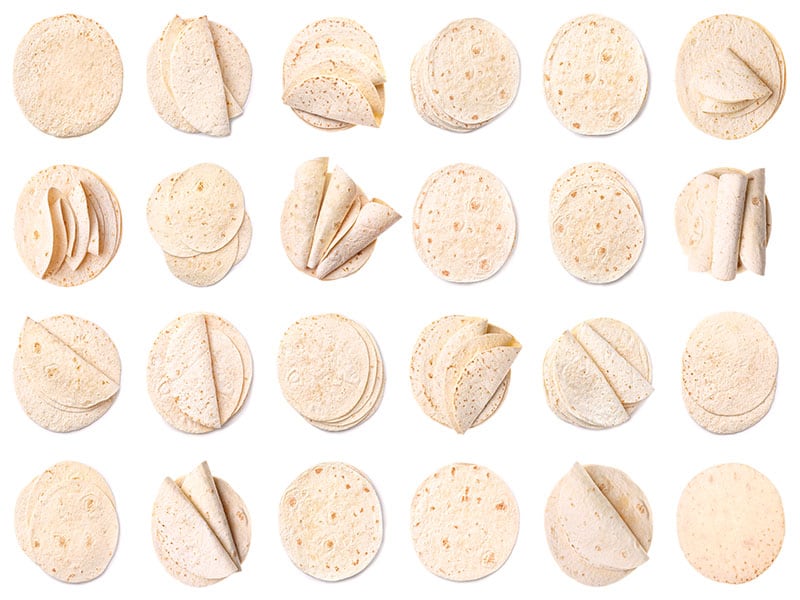
Temperature:
The recommended conditions to keep tortillas are in the room and the refrigerator or freezer. When the physical temperature goes high, it will promote the spoiled process of tortillas by the hot and humid. If there is a hot and dry condition, tortillas will be stiff.
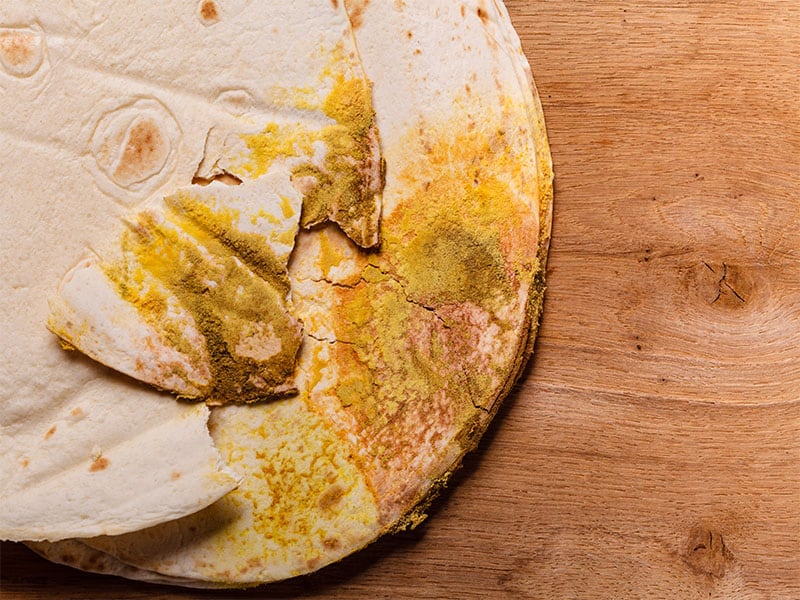
Insect:
When you leave tortillas in an open place, insects such as mice, ants, and flies will come due to the attraction of starch in tortillas. Sharing food with these little insects is not an important thing, but the tiny bacterias they bring to your food will become a harmful source.
How Do You Know That Tortillas Are Bad?
Your sense is this first reliable source to value whether your tortillas are harmful or not.
By Noticing The Strange Dots Appear On The Surface Of A Tortilla:
You could adequately evaluate the situation of a tortilla.
Typically, tortillas are grilled or fried on the top stove. Black browning dots appear in some areas due to the overheated inequality between the tortilla and the cooking stuff.
If there are any not usual color dots on it, they are moldy. The color of molds that usually appear on tortillas is green and bluish.
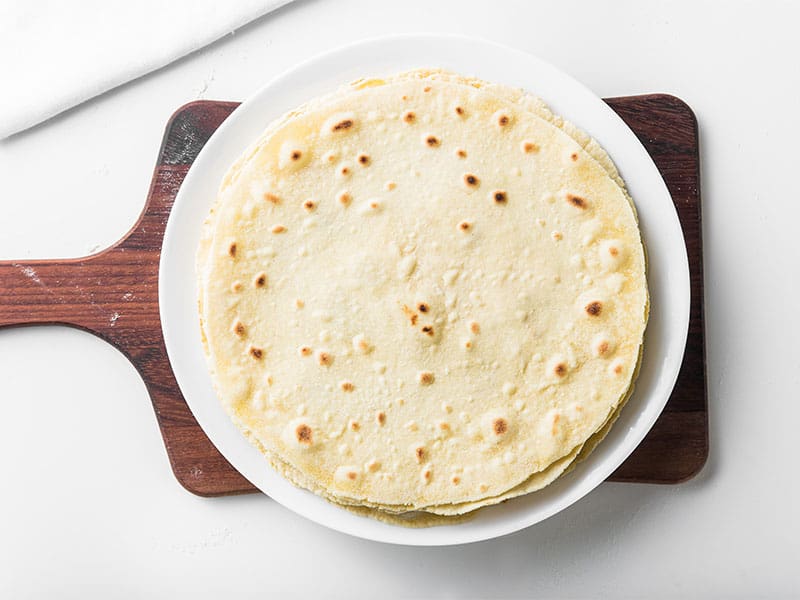
By Smell:
Normally, tortillas have a mild scent of flour material. When you notice that your tortillas have an unusual smell, it is the smell of mold, and you should throw them away.
Observing their discoloration: If you notice that your tortillas have different colors from the time you bought or made them, they are no longer safe for you to eat. Except for the spinach tortillas, they already have the green color.
By Checking Their Texture:
When you feel that your tortillas are slimy and a bit wet. Even if you kept them in a dry place, they are not edible anymore. You should discard the top and the bottom tortillas, and the middle can still be edible if you have a stack of them.
Stiffness:
When tortillas become stiff, it doesn’t mean that they are inedible. Usually, the moisture in tortillas is low, and that is why you can keep them for nearly 10 days in the pantry after the “opened” day. If the moisture is lost, their texture will be stiff. This time, you should reheat the tortillas or reuse them differently.
Can I Reuse The Mold Tortillas?
You might think that getting rid of the mold area in tortillas will make them edible again. Yes, this is true to some people who have a robust digestive system.
When you want to get rid of the mold, you could dampen a paper towel in vinegar and wipe off the mold and reheat it.
Vinegar can kill almost 82% of bacterias in tortillas. But this method only applies if you have an excellent digest system because the acid in your stomach will kill the rest of the bacteria.
People who are sensitive to vinegar or a weak digest system will be at risk from this method.
Another way to reuse the mold tortillas is to leave out the mold areas by cutting them off. It is similar to vinegar. Only people who have a good digestive system are allowed to use it.
How Long Does A Tortilla Last?
The easy way to make sure that a tortilla is still in its best edible time is to check for the expiration date. Sometimes, you can use the over expiration date tortilla if you keep them in the refrigerator or freezer. Here is the time to keep your tortillas in different situations:
How To Store The Leftover Tortillas?
If the packaging of your tortillas is resealable, you need to reseal it and keep it in a cold, dry place.
If the packing is not resealable, you should transfer the tortillas into an air container before keeping them in a cold, dry place.
At room temperature, homemade tortillas last for 2-3 days while the other tortillas last for 4-5 days more.
Aside from keeping them at room temperature, you may wonder if it’s possible to freeze these tortillas. Well, though the answer can vary based on different factors, it could happen.
When you decide to do so, wrap them carefully and reheat them after defrosting or taking them out of the fridge. You will know how to store tortillas in a freezer with the video below.
What is The Best Way To Reheat The Tortillas?
If they are in the refrigerator, you should take them out and wait till the tortillas are back to room temperature before reheating them.
If they are in the freezer, you should gradually change their temperature by defrosting them in the refrigerator for a night then taking them back to room temperature before reheating.
You can reheat tortillas by grilling on the stove or by using an oven or microwave. Put the tortillas with a ceramic cup of water or a damp towel into the microwave to reheat them.
Or you can use the Mexican way to soak the tortillas under the faucet and then leave them for a few seconds on the stove, flip on the other side.
After reheating, you keep these tortillas warm by covering them with a damp towel or transfer into a basket or a tortillas keeper.
FAQs
Are Your Tortillas Still Good?
Even though tortillas are quite a durable food, you should pay attention to any strange things in your tortillas to make sure they are safe for you to use. Different types of tortillas have their own shelf life, and it also depends on the keeping conditions.
I hope that you would find the most appropriate way to store the tortillas and recognize the insufficient evidence from your tortillas.
If you have any experience with tortillas, please feel free to share them with me via the comment section.
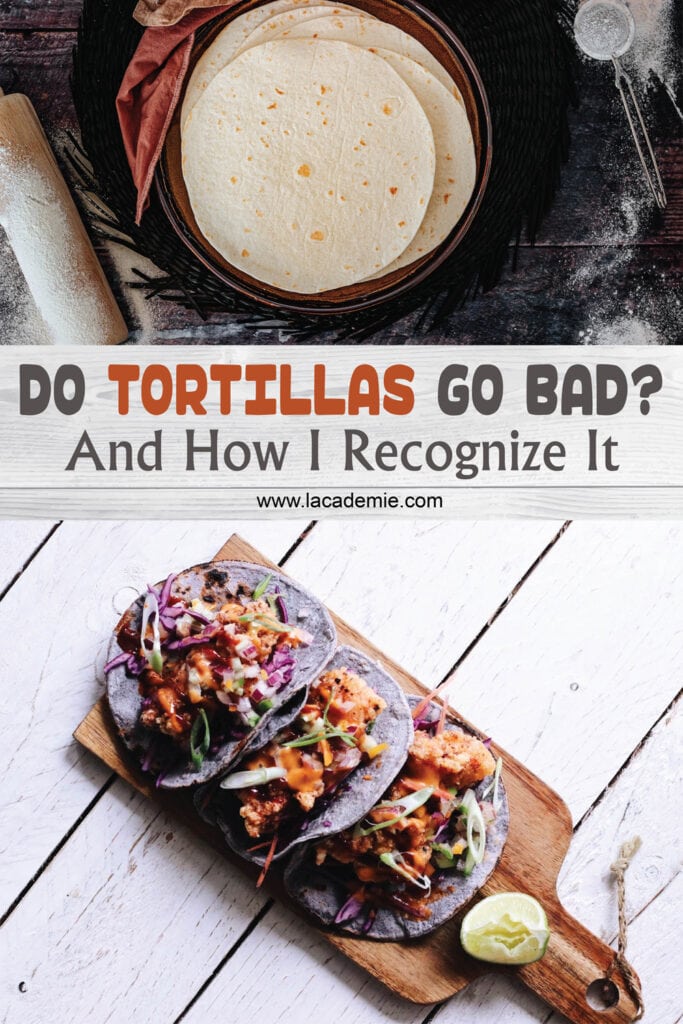
Reference
Gomez, M. H., Lee, J. K., McDonough, C. M., Waniska, R. D., & Rooney, L. W. (1992). Corn starch changes during tortilla and tortilla chip processing. Cereal Chem, 69(3), 275-279.
Waniska, R.D., Cepeda, M., King, B.S., et al. 2004. Effects of Flour Properties On Tortillas Qualities. Cereal Foods World. 49(4). pp.273-244.


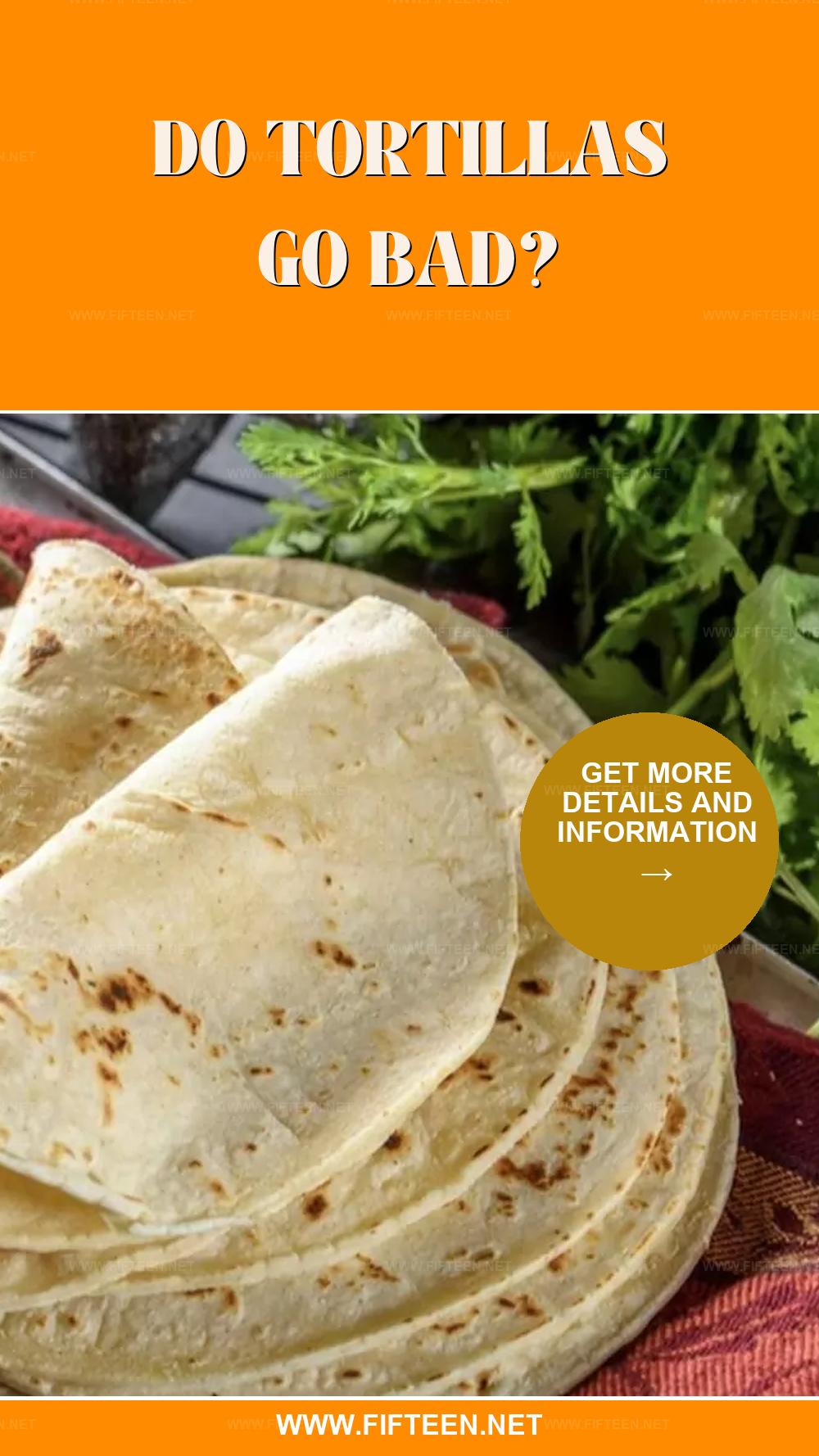
Jamie Scott
Editor in Chief, Senior Content Writer
Expertise
Home Cooking, Meal Planning, Recipe Development, Baking and Pastry, Food Editor, Cooking-video Maker, Western Food Evaluation Expert
Education
Le Cordon Bleu College of Culinary Arts
Local Community College, New York, NY
Jamie Scott is a skilled culinary expert and content creator specializing in Western cuisine. With over 15 years in the culinary field and formal training from Le Cordon Bleu, Paris, Jamie deeply understands how to blend nutrition with delicious flavors. His passion for cooking matches his commitment to making healthy eating accessible and enjoyable.
On Fifteen.net, Jamie brings a fresh perspective to classic dishes and beverages, offering readers insightful recipes, cooking tips, and a fresh view on meal planning that emphasizes taste, health, and simplicity.